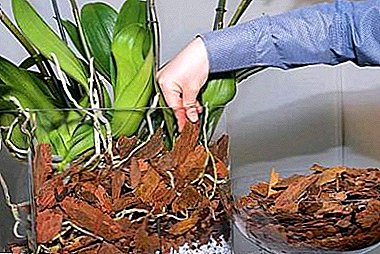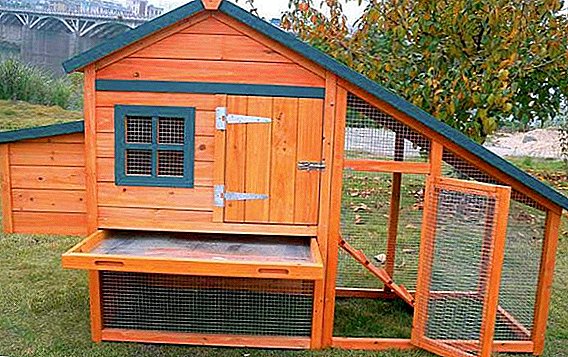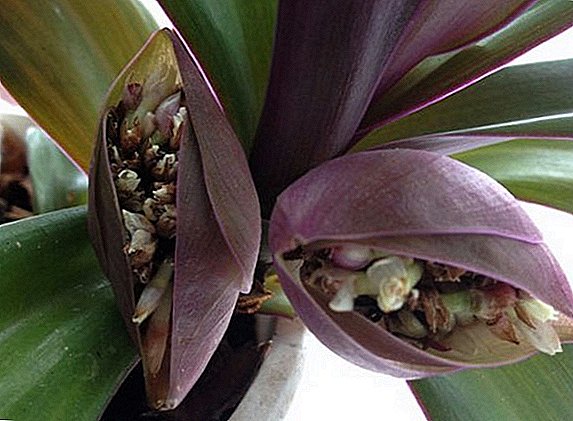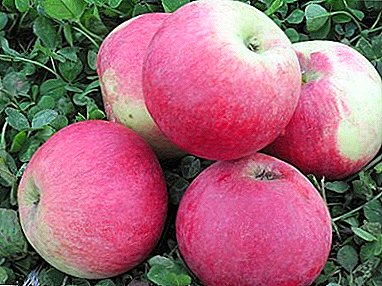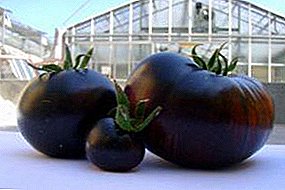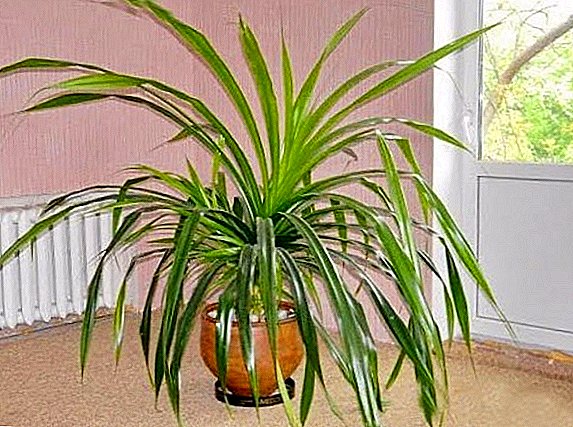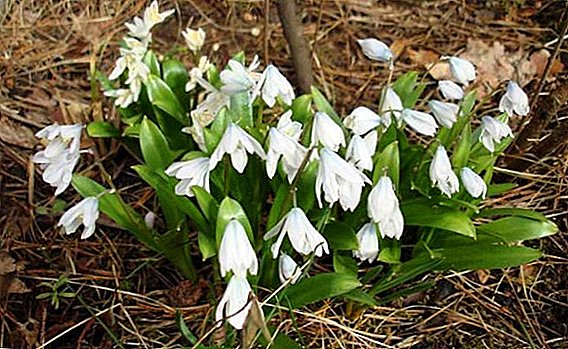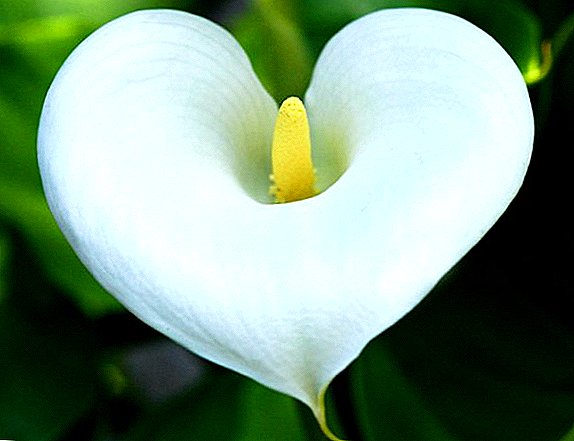 Flowering tender, beautiful callas enthralls The flowers of this plant are extremely beautiful and elegant. Despite the fact that care for callae does not require much effort, there are a considerable number of diseases that can lead to the absence of flowering or death of the plant. From this article you will learn why such troubles arise and what are the measures to combat diseases of callas.
Flowering tender, beautiful callas enthralls The flowers of this plant are extremely beautiful and elegant. Despite the fact that care for callae does not require much effort, there are a considerable number of diseases that can lead to the absence of flowering or death of the plant. From this article you will learn why such troubles arise and what are the measures to combat diseases of callas.
Calla diseases caused by improper conditions
Calla - An unpretentious plant, however, like any living thing, requires proper care. Under the wrong conditions, African beauty may not bloom, acquire a painful, dull appearance with twisted leaves, or disappear altogether. Timely corrected errors in the supervision of the flower necessarily help, and you can enjoy its beauty.
Calla does not bloom

The lack of flowering calla is one of the most common and distressing consequences of improper care of the plant. The reasons why the calla does not bloom may be several:
- insufficient watering;
- cramped pot;
- no rest period;
- improper fertilizer or lack of it.
The plant is in great need of space. A narrow little pot will lead to the fact that the pet will not be able to bloom. The height of the container should be such that the root does not occupy more than half of it, and in diameter it should be slightly larger than the crown of leaves. When the children appear, they must be removed.
 Kalle needs a rest period. This is usually the winter period. At this time, the leaves begin to dry. The pot with the plant must be moved to a cool place and occasionally watered so that the flower does not dry out. This period is necessary for the root system to gain strength. If the flower does not arrange such a holiday, it will not bloom. In early spring, the calla can be re-placed on the windowsill and resume regular watering.
Kalle needs a rest period. This is usually the winter period. At this time, the leaves begin to dry. The pot with the plant must be moved to a cool place and occasionally watered so that the flower does not dry out. This period is necessary for the root system to gain strength. If the flower does not arrange such a holiday, it will not bloom. In early spring, the calla can be re-placed on the windowsill and resume regular watering.
Important! In order for calla to bloom well after a period of rest, it is recommended to bring the flower out onto a balcony, loggia or a window often ventilated. It is even better if it is possible to plant it in open ground for spring and summer time.The plant should be fed phosphate-potassium fertilizers. If there is a lot of leaves on calla, however there is no flowering, it means that there is excess nitrogen in the fertilizer. For good flowering calle need enough phosphorus and a little potassium.
Fragility of leaf stalks
Yellowing of the leaves and fragility of leaf stalks often occur due to improper care. The fragility of the petioles is caused by a lack of nutrients in the soil. With a lack of nitrogen and potassium leaves become pale and fall down.
 Trouble can also occur due to improper irrigation: excessive amount or lack of moisture. Leaf petioles will be brittle and in cases where the plant is placed under the direct rays of the sun.
Trouble can also occur due to improper irrigation: excessive amount or lack of moisture. Leaf petioles will be brittle and in cases where the plant is placed under the direct rays of the sun.
Did you know? During periods of rest, the leaves of all types of callas, except white, turn yellow and dry. White beauties are the only ones whose foliage remains predominantly green even in winter.
Strongly stretched stems
Calla does not like the abundance of light. However, when it is insufficient, the stalks of the plant will be strongly drawn out and become brittle. This also happens at very high temperatures in the room where the flower grows.
The plant must be identified in a slightly shaded place, however, so that there is no lack of sunlight. Especially it is necessary to avoid direct hit of the sun on a flower. It is not recommended to put the calla on the window sill, close to the battery. This will lead to overheating of the flower, strongly elongated and brittle stems.
Infectious diseases calla, methods of dealing with them
 As a result of improper care or poor quality planting material, poor soil calla is exposed to infectious diseases. They quickly make themselves known: the plant's color fades, the calla leaves curl or turn yellow, dry out, the stems become brittle. To avoid the death of the plant, it is necessary to calculate the cause of this state and take the necessary measures in time.
As a result of improper care or poor quality planting material, poor soil calla is exposed to infectious diseases. They quickly make themselves known: the plant's color fades, the calla leaves curl or turn yellow, dry out, the stems become brittle. To avoid the death of the plant, it is necessary to calculate the cause of this state and take the necessary measures in time.
Anthracnose
Anthracnose is a fungal disease of calla. Such a disease among these beauties is quite common.
Calla anthracnose has the following manifestations:
- dented brown spots appear on the leaves;
- over time, the spots become larger in size, a red edging appears on their edges, and a white mold in the center;
- leaves crack and dry;
- stems weaken;
- the flowers grow dull and curl.
- increased air temperature;
- excessive air humidity and soil.
- remove damaged leaves from plants and soil;
- reduce watering;
- move the plant away from the batteries;
- treatment with fungicides ("Fundazol", "Fitosporin-M").
Important! The fungus tends to pass from the leaves to the soil. Therefore, damaged fallen leaves should be immediately removed. If the decontamination measures did not help, you need to transplant the flower, and the pot should be thoroughly disinfected.
Mealy dew
 Mealy dew develops due to the destruction of calla by fungi. With such a disease, white bloom appears on the leaves of the plant, which very quickly increases in volume and over time covers all the leaves of the flower. Externally, the plaque is similar to grains of flour, which abundantly cover the surface of calla. Over time, the affected parts turn black and disappear.
Mealy dew develops due to the destruction of calla by fungi. With such a disease, white bloom appears on the leaves of the plant, which very quickly increases in volume and over time covers all the leaves of the flower. Externally, the plaque is similar to grains of flour, which abundantly cover the surface of calla. Over time, the affected parts turn black and disappear.
Methods of struggle:
- removal of damaged leaves (if they are not very many);
- fungicide treatment;
- temper watering.
Did you know? Mealy dew does not need an abundance of moisture, so it can develop in dry soil. The surest method of its eradication is three-time treatment with fungicides for houseplants (1 time per week).
Gray rot

Gray calla rot is caused by the botrits cinera. Unlike anthracnose, gray rot can affect all areas of the plant: leaves, stems, flowers. Diseased leaves are covered with gray bloom, and gray-green spots appear on the flowers. Over time, the blooming part acquires a brown tint and becomes covered with gray veil.
Causes of the disease:
- high humidity;
- excessive watering;
- planting in contaminated soil;
- infected planting material.
- remove all infected leaves;
- moderate saturated watering;
- treat the plant and soil with fungicides (Rovral, Fundazol).
Important! The fungus can be stored in the ground for several years, transmitted along with infected parts of the plant. Therefore, a badly damaged flower needs to be transplanted into a new soil, and the old one thrown away. When transplanting babies, treat them with fungicides.
Root rot

Calla root rot is triggered by a Fitovtor fungus. Signs of Calla Disease:
- leaves and flowers dry out;
- the plant quickly weakens;
- gray mold can be noticed on the ground;
- roots become rotten.
- high air temperature;
- high humidity;
- excessive watering;
- excessive fertilizer;
Methods of struggle:
- transplant in dry soil and water at first very moderately;
- move the plant to a cool, well-ventilated area;
- revise the practice of feeding;
- process fungicides ("Ridomir", "Profit Gold").
Bacterial rot

Bacterial rot calla is caused by bacteria of the genus Erwinia. With the disease, the root of the plant and the base of the leaves darken, and eventually rot. The surface of the leaves becomes yellow. The plant does not dry out, namely it rots.
Causes of illness:
- high temperature and humidity;
- excessive watering;
- excessive nitrogen fertilization.
How to deal with pest callas
As with any living plant, pests can attack calla. They suck all useful substances out of the plant, poison it with their waste products, and as a result the plant dies. Timely measures to combat the scourge will save your beauty.
Spider mite
 Mites feed on the top layer of plant leaves. With the defeat of the calla with a spider mite, its leaves turn gray, between them you can see a thin spider web. On the bottom of the leaves, small black spots are formed. Buds often do not bloom, dry out and disappear.
Mites feed on the top layer of plant leaves. With the defeat of the calla with a spider mite, its leaves turn gray, between them you can see a thin spider web. On the bottom of the leaves, small black spots are formed. Buds often do not bloom, dry out and disappear.
Causes of spider mite:
- very dry air;
- heat;
- insufficient watering.
- air humidification;
- a room in a cooler place;
- wiping the leaves with a solution of soap or Neoron, Fufan.
Thrips
They feed on plant sap. With the defeat of the calla by this pest, the leaves turn pale and dry, curl, white spots can also appear on them. To get rid of pests, you need to moisten the air, cut off the affected leaves and treat the plant with insecticides.
Did you know? Thrips do not tolerate the smell of naphthalene. It can also help with pest control.
Aphid
Aphids are small insects (black, green, white or gray) that feed on plant sap. They poison the callah with waste products. Usually pests are located on the lower parts of the leaves. Clear signs of the defeat of aphids are yellowing of foliage, fast wilting of flowers. Existing buds do not bloom, and dry out. Over time, the top of the leaves is covered with a sticky coating.
Methods of struggle:
- temporarily stop fertilizing with nitrogen;
- process the plant with potash oil (20 grams per liter of boiled warm water) or with special preparations ("Decis", "Aktara").


